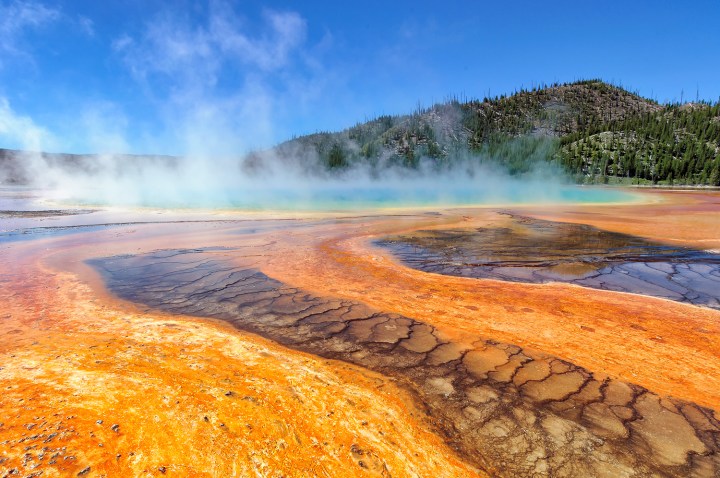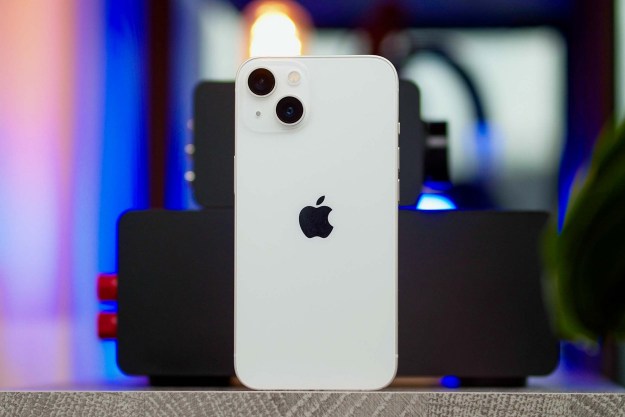
With celebratory events planned throughout the year, it’s a good time to check out these national treasures. If you’ve never ventured outdoors before, don’t fret: Use your smartphone as a personal guide. There are various apps to help you find your way around a national park, and the Find Your Park website is a good resource for getting started. Here are the apps we’ll be using, along with extra gear to capture the moment and ensuring we find our way back to the visitors’ center.
REI National Parks Guide & Maps

Outdoor goods retailer REI is going all out to celebrate the National Park Service’s centennial anniversary. Its free app, Guide to National Parks (iOS and Android), is one of the most comprehensive guides in development. It already provides general information, tips, maps, and other resources for 42 parks, with several more in progress. Besides trail maps and suggestions for the best hikes, the app tells you what are some family-friendly activities as well as must-see “gems.” You can even plan your trip using the to-do list. It also offers info about available food and lodging at each park, activities, and photos.
What we like is the use of GPS data to help you not only locate nearby parks, but also provide location info in case of emergency. Should you get lost, you can provide latitude and longitude data of your location, and even share the details via social media (provided there is cellular or Wi-Fi service). You can also use GPS tracking to help you find your way back.
Even if you’re a National Park newbie, the app contains all the info to make you look like a seasoned hiker.
Eton FRX5

Your phone is one of the best GPS devices – until it loses power. If you plan to venture deep inside a park, the FRX5 ($150) is a handy tool. Besides a solar panel, the FRX5 can juice up your phone through a rechargeable lithium-ion battery or three alkaline batteries. When those fail, there is a hand-crank for recharging manually (four minutes of cranking gives you a minute of talk time). This weather-resistant device also has an AM/FM radio, flashlight, and even weather alerts.
Coleman National Parks Edition Nostalgia LED Lantern

This lantern from Coleman ($150) harks back to what might have been used 100 years ago when the NPS was first established, except this one uses a bright 700-lumen LEDs and is way safer. The LEDs can adjust down to 50 lumens, and run continuously for 15 hours on high before you need to replace the six D alkaline batteries (you can also plug it into an outlet). There’s a USB port that lets you recharge your phone, too.
Gaia GPS

When you venture into the wild where network coverage is iffy (or just nonexistent), your phone’s GPS function isn’t as useful if you can’t load maps. Google Maps lets you download maps to your phone for offline use, but Gaia GPS ($20) app for iOS and Android is better suited for natural environments. Used by expert guides, the app provides topographic maps and trail info that covers the world, not just the National Parks. You can mark way points, get weather info, see how far or fast you’ve traveled, view multi-layered maps, and geo-tag photos with location info along the way. Whether you’re preparing beforehand or already into your trek, this GPS app can help you discover a National Park and get out of one safely.
Note that using GPS will cause significant battery drain, so be sure to pack a charger when using any mapping app.
Olympus Tough TG-Tracker

The TG-Tracker ($350) is the camera to bring along on a hike. It’s built to withstand harsh weather conditions, and it can shoot videos in 4K. What makes this the ideal camera for National Park visits are some of the handy features designed for adventures. There’s GPS to help you locate your position, and an electronic compass to guide you in the right direction. Various sensors are used to determine altitude, depth, barometric pressure, and even temperature. When it gets dark, use the LED headlight to illuminate your path.
REI Traverse 28 Daypack (NPS Edition)

You need a bag to stow your gear, and the Traverse 28 is that bag. It’s designed to help you maintain your balance, while the mesh back panel helps to circulate air to prevent a sweaty back. A pocket with drainage lets you pack your wet clothes, while another pocket has a tube port for hydration packs. Get the special NPS version: REI donates 10 percent of every sale to the National Park Foundation.
SkyView Free

While National Parks are great places to discover nature on Earth, they’re also terrific for checking out the night sky. Limited light pollution at many of these parks means you can better view stars, planets, and other celestial bodies – providing you with a visual treat. Unless you aced Astronomy 101, most of us are less likely to differentiate Perseus from Scorpius. SkyView Free (iOS and Android) is a fun augmented-reality app (think Pokemon Go) that helps you locate what’s in the sky. Just point your phone’s camera at a particular object, and the app will reveal the name and details about it.


